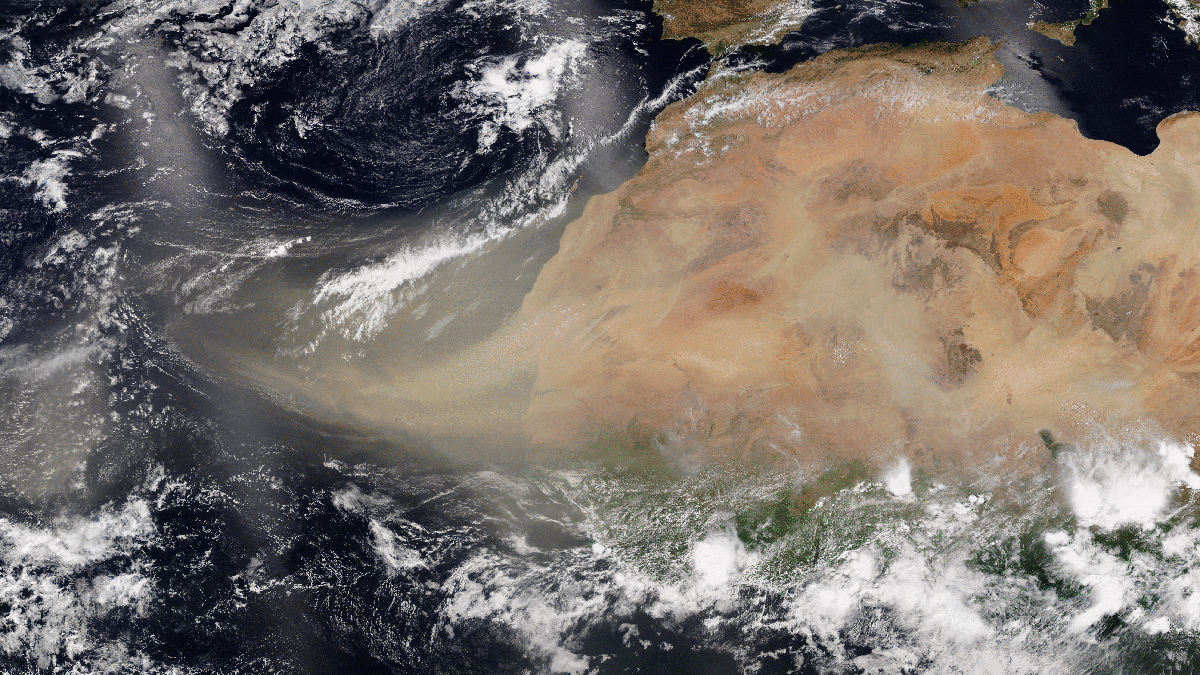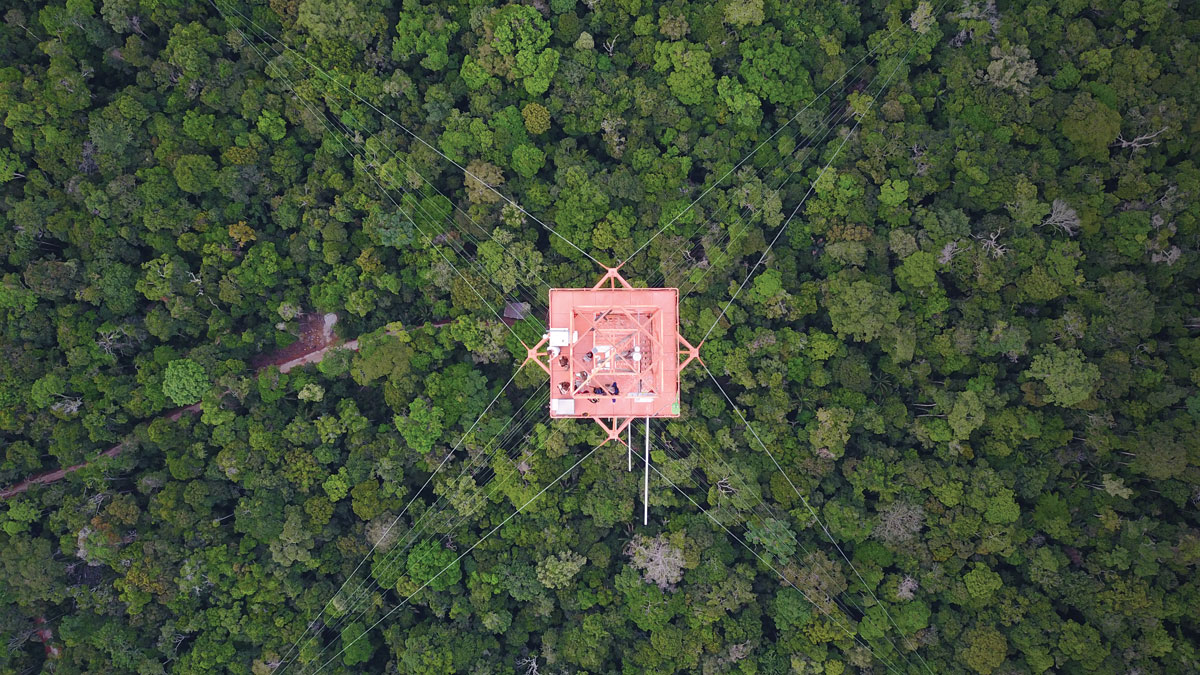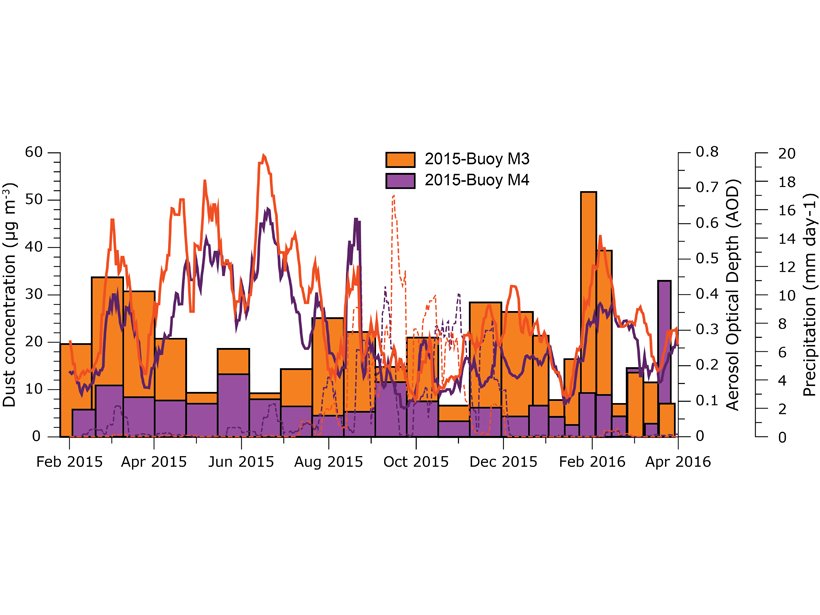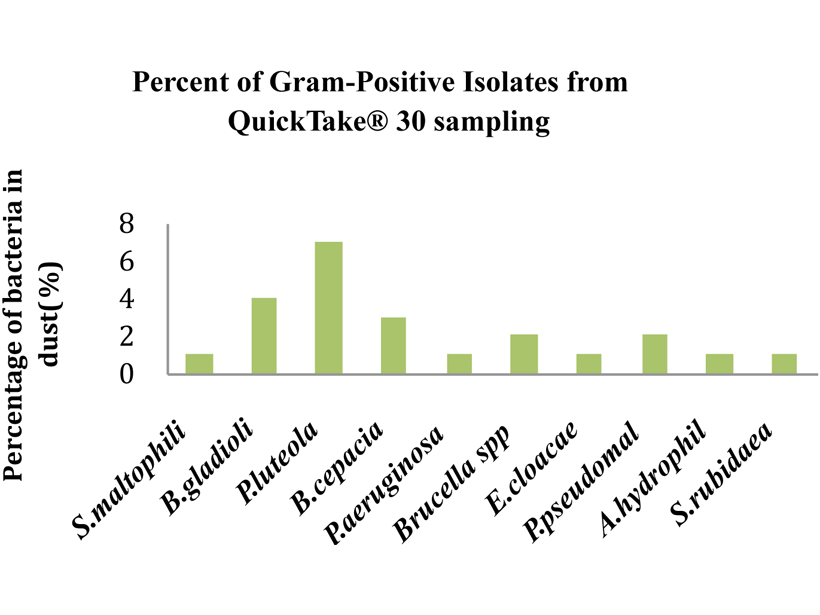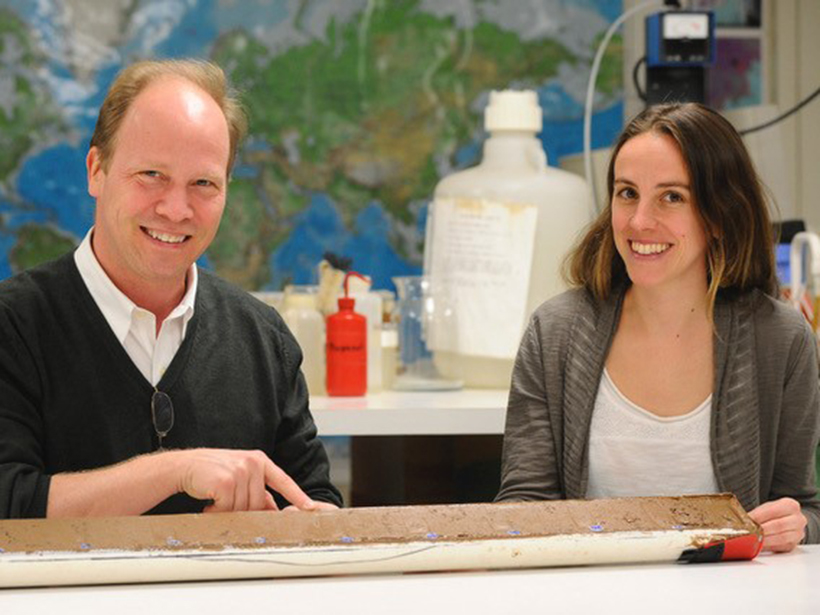A new study of seafloor sediments suggests reactions in the atmosphere convert dust-borne iron into forms more readily taken up by phytoplankton.
Sahara Desert
Lots of Dust Gets Sucked Up by Jet Engines
Changing flight times and holding altitudes could substantially reduce the amount of wear-inducing dust ingested by jet engines.
Africa’s Earth, Wind, and Fire Keep the Amazon Green
Jet streams sprinkle North African dust over the Amazon, providing the rain forest with much needed nutrients. Changing wind patterns and increasing smoke may shift the system.
Seasonality in Saharan Dust Across the Atlantic Ocean
The first time series of bi-weekly dust concentrations measured in-situ across the remote Atlantic Ocean.
Saharan Dust Reaching the Americas Comes from El Djouf
The Saharan dust that crosses the Atlantic and fertilizes the Amazon may be coming from the El Djouf region between Mauritania and Mali, which is farther west than previously thought.
Dangerous Bacteria Catch a Ride on Saharan Dust
Saharan dust events can spread bacterial pathogens over long distances, but we may be able to predict the human health risk from exposure.
Dusting Off the Arid Antiquity of the Sahara
New research on the geochemistry of Canary Islands paleosols shows that the Sahara has been an arid dust producer for at least 4.8 million years.
Podcast: When the Sahara Was Green
Past climate change likely motivated human migrations.

